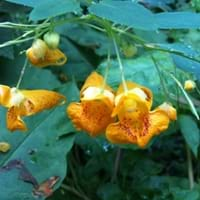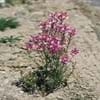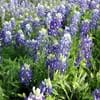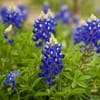Life Span
Annual
Annual and Perennial
Type
Fern, Succulent
Bulb or Corm or Tuber
Origin
Africa, Canada, North America, United States
Central America, South America
Types
impatiens balsaminak, impatiens hawkeri
Vine, Flowering plant
Habitat
Grassland, River side
All sorts of environments, Along Railroads, Banks, Moist Ditches, Roadsides, rocky banks of streams
USDA Hardiness Zone
2-11
10-13
AHS Heat Zone
12 - 1
12-1
Sunset Zone
Not Available
21,22
Habit
Upright/Erect
Vining/Climbing
Minimum Width
Not Available
Flower Color
Yellow, Orange
Purple, Rose
Flower Color Modifier
Bicolor
Bicolor
Fruit Color
Green
Not Available
Leaf Color in Spring
Green
Purple, Dark Green, Black
Leaf Color in Summer
Green
Light Green
Leaf Color in Fall
Green
Several shades of Green
Leaf Color in Winter
Light Green
Light Green
Leaf Shape
Elliptic, toothed
Acicular
Plant Season
Summer, Fall
Spring, Summer, Fall, Winter
Sunlight
Partial Sun, Partial shade
Full Sun, Partial Sun
Growth Rate
Fast
Very Fast
Type of Soil
Loam, Sand
Clay, Loam, Sand
The pH of Soil
Acidic, Neutral
Acidic, Neutral, Alkaline
Soil Drainage
Average
Well drained
Bloom Time
Summer, Late Summer, Early Fall
Late Spring, Early Summer, Summer, Late Summer, Early Fall, Fall, Late Fall
Tolerances
Pollution
Drought
Where to Plant?
Ground
Container, Ground
How to Plant?
Stem Planting, Transplanting
Cuttings, Leaf Cutting, Tuber propagation
Plant Maintenance
Low
Medium
Watering Requirements
Needs less watering
Keep the Soil well drained, Needs very little water
In Summer
Moderate
Lots of watering
In Spring
Moderate
Moderate
In Winter
Average Water
Average Water
Soil pH
Acidic
Acidic, Neutral, Alkaline
Soil Type
Clay
Clay, Loam, Sand
Soil Drainage Capacity
Clay, Moist
Well drained
Sun Exposure
Bright direct sunlight
Full Sun, Partial Sun
Pruning
Prune lower leaves, Prune ocassionally
Remove damaged leaves, Remove dead branches, Remove dead leaves
Fertilizers
Fertilize only when soil is poor
All-Purpose Liquid Fertilizer
Pests and Diseases
Bacteria wilt, Downy mildew, Drought
Red blotch
Plant Tolerance
Drought, Dry soil
Drought
Flower Petal Number
Single
Single
Foliage Texture
Medium
Coarse
Foliage Sheen
Matte
Matte
Attracts
Bees, Butterflies, Hummingbirds
Aphids, Beetles, Cutworms, Insects, Mites, Whiteflies
Allergy
allergic conjunctivitis, Asthma, Runny nose
Abdominal pain, allergic reaction, Nausea, Skin rash, Twitching of face
Aesthetic Uses
Cottage Garden
Not Used For Aesthetic Purpose
Beauty Benefits
Poison Ivy
Not Available
Edible Uses
Sometimes
Yes
Environmental Uses
soil erosion prevension on hill slopes
Air purification
Medicinal Uses
antimicrobial, treating poison ivy, Upset stomach
Cures constipation, Fiber, Low calories, lowering blood pressure, Potassium, ß-carotene, Vitamin A, Vitamin C
Part of Plant Used
Bark, Leaves
Leaves, Root, Shoots, Stem, Tuber
Other Uses
Can be made into a herbal tea
Starch, Used As Food, Used as Ornamental plant
Used As Indoor Plant
No
Sometimes
Used As Outdoor Plant
Yes
Yes
Garden Design
Cottage garden
Container, Edible, Groundcover, Hanging Basket, Herb / Vegetable, Mixed Border, Rock Garden / Wall, Vine
Botanical Name
IMPATIENS capensis
IPOMOEA batatas 'Blackie'
Common Name
Jewelweed
Blackie Sweet Potato Vine, Sweet Potato Vine
In Hindi
Not Available
शकरकन्द
In German
Impatiens capensis
Süßkartoffel
In French
Impatiente du Cap
Patate douce
In Spanish
Impatiens capensis
Ipomoea batatas
In Greek
Impatiens capensis
Sweet potato
In Portuguese
Impatiens capensis
Batata-doce
In Polish
Impatiens capensis
Wilec ziemniaczany
In Latin
Impatiens capensis
Ipomoea batatas
Phylum
Magnoliophyta
Tracheophyta
Class
Magnoliopsida
Magnoliopsida
Order
Geraniales
Solanales
Family
Balsaminaceae
Convolvulaceae
Clade
Dicotyledonous
Angiosperms, Asterids, Eudicots
Tribe
Not Available
Not Available
Subfamily
Not Available
Not Available
Number of Species
Not Available
Season and Care of Jewelweed and Sweet Potato Vine
Season and care of Jewelweed and Sweet Potato Vine is important to know. While considering everything about Jewelweed and Sweet Potato Vine Care, growing season is an essential factor. Jewelweed season is Summer and Fall and Sweet Potato Vine season is Summer and Fall. The type of soil for Jewelweed is Loam, Sand and for Sweet Potato Vine is Clay, Loam, Sand while the PH of soil for Jewelweed is Acidic, Neutral and for Sweet Potato Vine is Acidic, Neutral, Alkaline.
Jewelweed and Sweet Potato Vine Physical Information
Jewelweed and Sweet Potato Vine physical information is very important for comparison. Jewelweed height is 90.00 cm and width 30.00 cm whereas Sweet Potato Vine height is 15.00 cm and width Not Available. The color specification of Jewelweed and Sweet Potato Vine are as follows:
Jewelweed flower color: Yellow and Orange
Jewelweed leaf color: Green
Sweet Potato Vine flower color: Purple and Rose
- Sweet Potato Vine leaf color: Purple, Dark Green and Black
Care of Jewelweed and Sweet Potato Vine
Care of Jewelweed and Sweet Potato Vine include pruning, fertilizers, watering etc. Jewelweed pruning is done Prune lower leaves and Prune ocassionally and Sweet Potato Vine pruning is done Remove damaged leaves, Remove dead branches and Remove dead leaves. In summer Jewelweed needs Moderate and in winter, it needs Average Water. Whereas, in summer Sweet Potato Vine needs Lots of watering and in winter, it needs Average Water.





